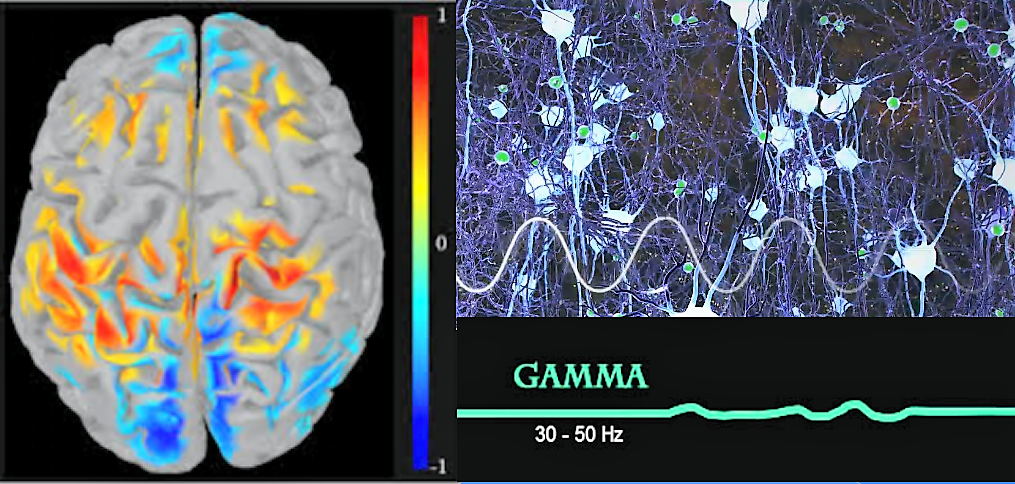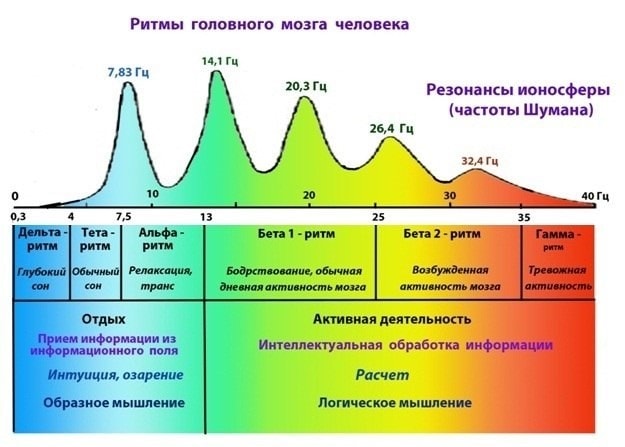Sound and light stimulation helps with Alzheimer's disease while in mice, but the results are encouraging
The first methods that use sensory irritation to improve Alzheimer's disease were developed about two years ago, when it was about light stimulation. Now scientists have applied sound and are developing a combined light and sound technique. A week ago, an article appeared on the site of the Massachusetts Institute of Technology (hereinafter referred to as MIT) that groups led by Anthony Martorell and Li-Huei Tsai had an effect using sound stimulation.

According to neuroscientists, they managed to find a unique combination of sound and light stimuli, which in experiments on laboratory mice was able to reduce amyloid plaques, and as a result, improve memory and partially eliminate cognitive impairment associated with Alzheimer's disease. Scientists are preparing to conduct research in humans. Probably, the experiment will bring Alzheimer's disease stimulation therapy to a new level. Under the cat more about the new method and the results of the study, as well as a couple of words about the disease itself.
')
Alzheimer's disease is the most common neurodegenerative disease on the planet, in which there is an accumulation of amyloid plaques and neurofibrillary tangles (intracellular beta amyloid plaques). Both the cortex and some subcortical structures of the brain are affected. Today Alzheimer's disease is one of the most common forms of dementia.
Until the end, the pathophysiological mechanisms of the disease have not been studied, but it is known that the accumulation of beta-amyloid deposits and cellular material around and inside the cells (plaques and tangles) and their uncontrolled growth causes massive neuron death. This in turn leads to rapid memory loss and deterioration of cognitive processes.

One of the most significant problems in the treatment of Alzheimer's disease is the high density and insolubility of amyloid deposits. Plaques appear in connection with impaired protein synthesis in the neuron, and more specifically, due to excessive phosphorylation of Tau protein. As a result of this process, the threads of the protein begin to stick together and form amyloid plaques and tangles. Dense deposits lead to disintegration of microtubules in the cells, which ultimately leads to the death of neurons.
Currently, there are no methods for radical treatment of Alzheimer's disease, however, palliative methods are widely used, among which stimulation therapy is not the last.
Light Experiment
Two years ago, Nature reported that the institute's researchers exposed mice with Alzheimer's and high beta-amyloid content in the cerebral cortex to flickering light. Mice were left in the room with light flickering at a frequency of 40 Hz. The exposure lasted one hour a day, and was applied for one week. Researchers have suggested a relationship between gamma oscillations and beta-amyloid.
Light shimmering “baths” was enough to significantly reduce the synthesis of beta-amyloid by 40-50% in young mice with its increased content, and in old ones (with a pronounced Alzheimer's form) it led to the resorption of already formed plaques. The effect of a light stimulus flickering with a different frequency in the control group did not cause such an effect.
Analysis of gene expression under the influence of a light stimulus demonstrated the induction of genes responsible for the activation of macrophages in microglia, which in turn carry out the capture of beta-amyloid.
All phenomena were observed predominantly in the cells of the visual cortex and did not affect other areas of the brain. Meanwhile, plaque in Alzheimer's disease affected not only the visual part of the cortex, so the researchers decided to improve the method.
Experiment with light and sound
In the course of the development of the previous experiment, scientists exposed Alzheimer's mice to a combination of visual and auditory stimuli of the desired frequency. As in the previous experiment, researchers sought to induce gamma activity of neurons and thus reduce the number of amyloid plaques in both the visual and auditory cortex.
At first, experiments on audial stimulation were carried out. The head of the institute, Li-Hui Zai, has suggested that gamma induction caused by sound stimulation can reduce the transformation of Tau proteins into amyloid plaques not only in the sensory cortex, but also in the hippocampus, fully justified. After that, scientists moved to the complex effects.
The result exceeded expectations. The weekly experiment demonstrated improved memory and cognitive abilities. The plaques were resolved in large areas of the brain. The deposits disappeared in areas of the brain that are critical for functions such as thinking, learning, and memory.
Li-Huei Tsai, head of the MIT memory institute, said: "When we combine visual and auditory stimulation during the week, the effect on the prefrontal cortex and a very sharp decrease in amyloid levels is obvious." This means that the combined effect affected not only the sensory areas of the cortex, but also the areas of the brain responsible for thinking.

Scientists are optimistic about testing for humans. Preliminary studies on the safety of the method for healthy people have already been carried out.
Brain neurons are capable of generating electrical signals, signals are able to synchronize and form so-called. brain waves in multiple frequency ranges. It was noted that patients with Alzheimer's disease have impaired gamma activity of neurons, ranging from 30 to 60 Hz. It is assumed that this wave activity is important for such brain functions as attention, perception and memory.

The researchers reasonably suggested that sound and light stimulation will cause gamma induction in brain cells, which in turn will trigger immune responses (activation of macrophages) and beta amyloid resorption processes.
Talking about the victory over Alzheimer's disease is still premature, but the results, voiced by the authors of the study, can not fail to impress. Scientists do not hide optimism, and human studies can produce results already this year. Traditionally, I hope for your opinions on the methodology and its prospects in the comments.
Photo content used:
www.sciteclibrary.ru
www.jccfund.org
ru.wikipedia.org
DocPlayer.ru
Jeans
We do not have equipment for the treatment of Alzheimer's disease. We just sell electronics , different, a lot. Our catalog contains speakers, headphones, amplifiers, televisions, smart home systems, professional studio and concert equipment.

According to neuroscientists, they managed to find a unique combination of sound and light stimuli, which in experiments on laboratory mice was able to reduce amyloid plaques, and as a result, improve memory and partially eliminate cognitive impairment associated with Alzheimer's disease. Scientists are preparing to conduct research in humans. Probably, the experiment will bring Alzheimer's disease stimulation therapy to a new level. Under the cat more about the new method and the results of the study, as well as a couple of words about the disease itself.
')
A bit about Alzheimer's disease
Alzheimer's disease is the most common neurodegenerative disease on the planet, in which there is an accumulation of amyloid plaques and neurofibrillary tangles (intracellular beta amyloid plaques). Both the cortex and some subcortical structures of the brain are affected. Today Alzheimer's disease is one of the most common forms of dementia.
Until the end, the pathophysiological mechanisms of the disease have not been studied, but it is known that the accumulation of beta-amyloid deposits and cellular material around and inside the cells (plaques and tangles) and their uncontrolled growth causes massive neuron death. This in turn leads to rapid memory loss and deterioration of cognitive processes.

One of the most significant problems in the treatment of Alzheimer's disease is the high density and insolubility of amyloid deposits. Plaques appear in connection with impaired protein synthesis in the neuron, and more specifically, due to excessive phosphorylation of Tau protein. As a result of this process, the threads of the protein begin to stick together and form amyloid plaques and tangles. Dense deposits lead to disintegration of microtubules in the cells, which ultimately leads to the death of neurons.
Currently, there are no methods for radical treatment of Alzheimer's disease, however, palliative methods are widely used, among which stimulation therapy is not the last.
The essence of the MIT experiments
Light Experiment
Two years ago, Nature reported that the institute's researchers exposed mice with Alzheimer's and high beta-amyloid content in the cerebral cortex to flickering light. Mice were left in the room with light flickering at a frequency of 40 Hz. The exposure lasted one hour a day, and was applied for one week. Researchers have suggested a relationship between gamma oscillations and beta-amyloid.
Light shimmering “baths” was enough to significantly reduce the synthesis of beta-amyloid by 40-50% in young mice with its increased content, and in old ones (with a pronounced Alzheimer's form) it led to the resorption of already formed plaques. The effect of a light stimulus flickering with a different frequency in the control group did not cause such an effect.
Analysis of gene expression under the influence of a light stimulus demonstrated the induction of genes responsible for the activation of macrophages in microglia, which in turn carry out the capture of beta-amyloid.
All phenomena were observed predominantly in the cells of the visual cortex and did not affect other areas of the brain. Meanwhile, plaque in Alzheimer's disease affected not only the visual part of the cortex, so the researchers decided to improve the method.
Experiment with light and sound
In the course of the development of the previous experiment, scientists exposed Alzheimer's mice to a combination of visual and auditory stimuli of the desired frequency. As in the previous experiment, researchers sought to induce gamma activity of neurons and thus reduce the number of amyloid plaques in both the visual and auditory cortex.
At first, experiments on audial stimulation were carried out. The head of the institute, Li-Hui Zai, has suggested that gamma induction caused by sound stimulation can reduce the transformation of Tau proteins into amyloid plaques not only in the sensory cortex, but also in the hippocampus, fully justified. After that, scientists moved to the complex effects.
The result exceeded expectations. The weekly experiment demonstrated improved memory and cognitive abilities. The plaques were resolved in large areas of the brain. The deposits disappeared in areas of the brain that are critical for functions such as thinking, learning, and memory.
Li-Huei Tsai, head of the MIT memory institute, said: "When we combine visual and auditory stimulation during the week, the effect on the prefrontal cortex and a very sharp decrease in amyloid levels is obvious." This means that the combined effect affected not only the sensory areas of the cortex, but also the areas of the brain responsible for thinking.

Scientists are optimistic about testing for humans. Preliminary studies on the safety of the method for healthy people have already been carried out.
A little about how it works
Brain neurons are capable of generating electrical signals, signals are able to synchronize and form so-called. brain waves in multiple frequency ranges. It was noted that patients with Alzheimer's disease have impaired gamma activity of neurons, ranging from 30 to 60 Hz. It is assumed that this wave activity is important for such brain functions as attention, perception and memory.

The researchers reasonably suggested that sound and light stimulation will cause gamma induction in brain cells, which in turn will trigger immune responses (activation of macrophages) and beta amyloid resorption processes.
Total
Talking about the victory over Alzheimer's disease is still premature, but the results, voiced by the authors of the study, can not fail to impress. Scientists do not hide optimism, and human studies can produce results already this year. Traditionally, I hope for your opinions on the methodology and its prospects in the comments.
Photo content used:
www.sciteclibrary.ru
www.jccfund.org
ru.wikipedia.org
DocPlayer.ru
Jeans
We do not have equipment for the treatment of Alzheimer's disease. We just sell electronics , different, a lot. Our catalog contains speakers, headphones, amplifiers, televisions, smart home systems, professional studio and concert equipment.
Source: https://habr.com/ru/post/444910/
All Articles